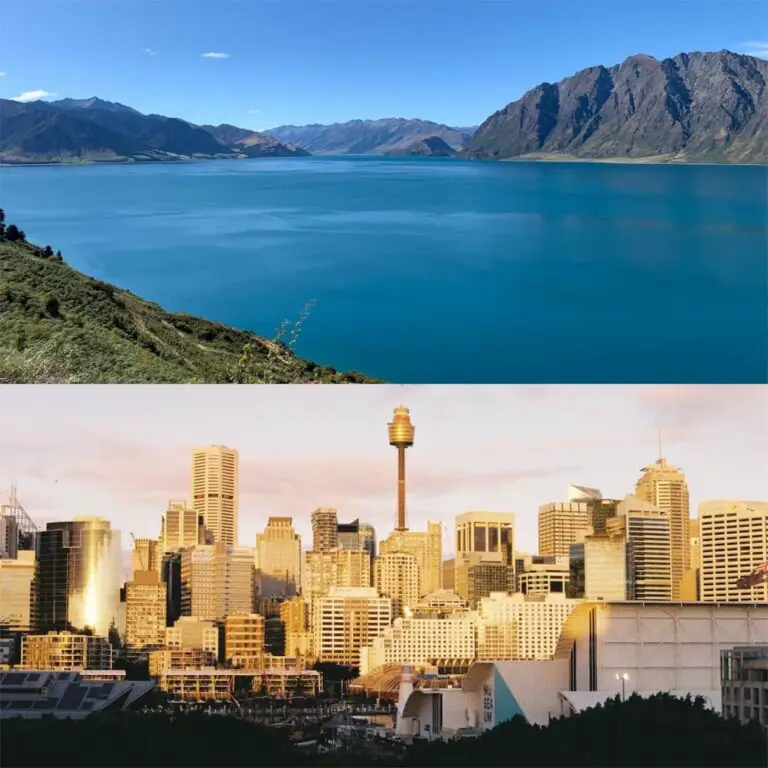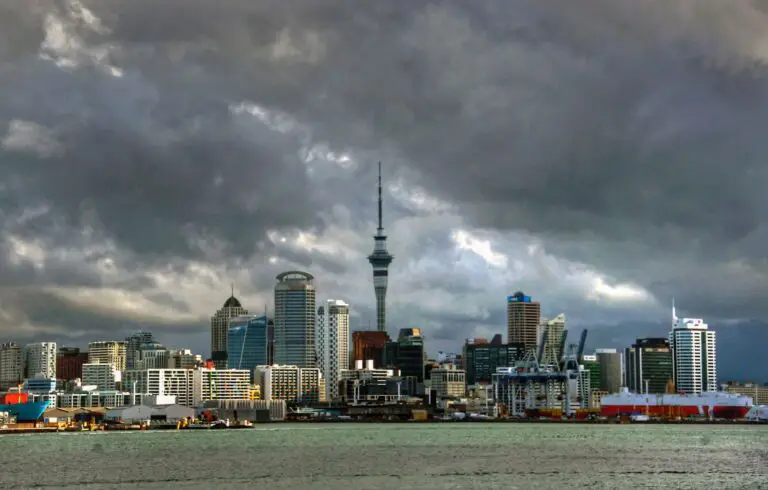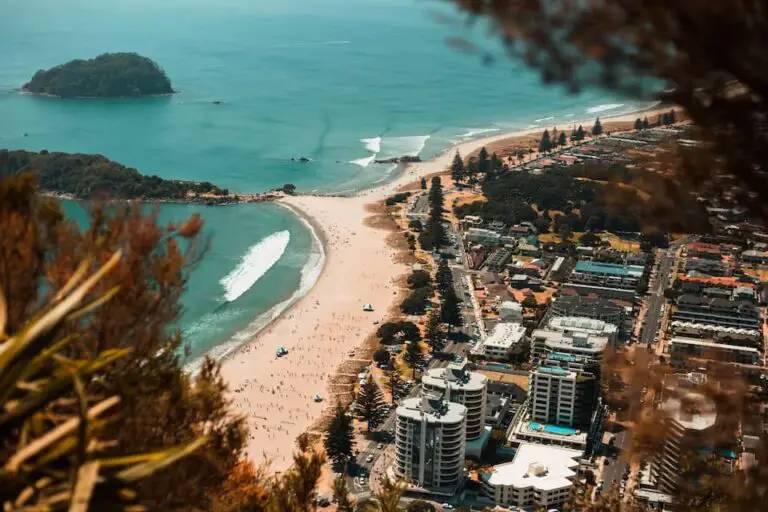Pros And Cons of Living in Hamilton: Your 2024 Guide
Towns and cities in New Zealand tend to either have British or Māori names, so you can probably guess which one applies to the North Island city of Hamilton. The city was actually named after John Fane Charles Hamilton, a British naval captain who died fighting against the Māori as New Zealand was forcibly colonised—making the name a bit problematic.
Even though Hamilton is one of the country’s biggest centres (it has the fourth largest population), it’s often overshadowed by Auckland, its nearest major neighbour and New Zealand’s biggest city. But this proximity can be a great thing—all the benefits of a big city while living in a nearby smaller city.
Hamilton might feel like a town, but it’s certainly still a big one. If you want that urban lifestyle, why wouldn’t you just move to Auckland? It’s time to weigh the pros and cons of making Hamilton your new home. And don’t worry—the city removed the bronze, life-size statue of John Fane Charles Hamilton back in 2020.
Living in Hamilton: Guide
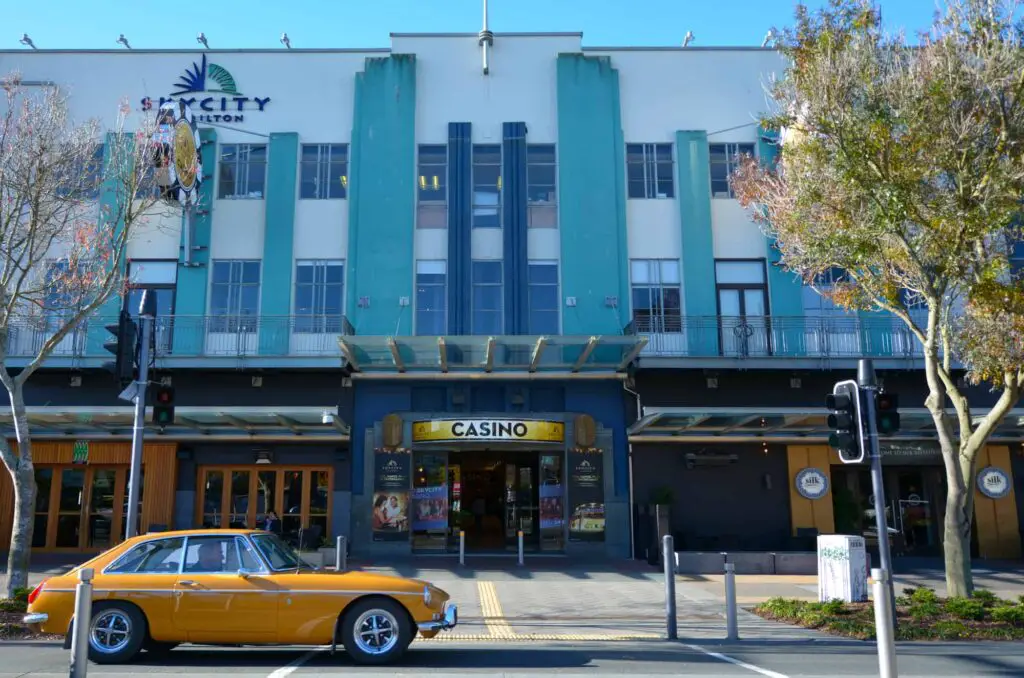
Hamilton isn’t some small backwater and it has a population of just over 185,000 people. This may make it a large town or a small city, depending on your point of view. Its population growth has been slower than many other New Zealand towns and cities.
Hamilton was surrounded by large peat bogs, although these were largely drained (starting back in the 1860s). This uncooperative landscape (and the difficulty building roads on it) is one of the reasons why Hamilton’s population has stayed reasonably small—it was a bit difficult to get there until the roads were drastically improved in the 1920s.
Located in the North Island’s Waikato region, the area is dominated by dairy farming, just like a great deal of New Zealand’s countryside. That’s not to say that anyone moving to Hamilton will find little else on offer job-wise, but the supply of dairy products and beef forms much of the region’s economy. There’s also a fantastic student vibe to the city. Of roughly 185,000 people in Hamilton, some 40,000 of them are tertiary students.
Most of New Zealand’s largest centres are on the coast, and because Hamilton is a little island, its weather tends to be a little colder in winter and a little warmer in summer—usually only by a couple of degrees when compared to nearby Auckland.
Pro: More affordable cost of living
Hamilton is cheaper than Auckland in practically every way that matters. This is clearly a considerable pro for making the city your new home. In fact, the leading cost of living comparison site Numbeo has determined that consumer prices in Auckland are more than 28% higher than in Hamilton, with rent being an astronomical 61% higher.
Pro: Distance to Auckland
There’s one thing NZ does badly, and that’s train connections between towns. There are very few, which makes Hamilton’s Te Huia train service a standout. You can travel from central Hamilton to central Auckland in approximately 2 hours and 40 minutes. You can drive the same distance in about 1 hour and 40 minutes. Hamiltonians can easily visit the big smoke, then head home.
Pro: A fun, student vibe
The high proportion of tertiary students in and around Hamilton has given the place more nightlife action than you might expect. Students (unsurprisingly) frequent the bars closest to campus, so you’ll find places like Mr Pickles, Wonder Horse, and the Roaming Giant to be pumping on any given evening.
Pro: A city for biking
Few places in NZ put much emphasis on the importance of bike paths, which feels like a real missed opportunity considering how beautiful the landscape is. Hamilton is ahead in this department, and the central city features some 150km of dedicated bike paths, meaning you don’t necessarily need a car.
Pro: Manageable on foot or bike
You can bike easily in Hamilton, and you can walk easily. The city has made a real effort to construct walkways that are both easily navigable and scenic. You can walk from one end of Hamilton to the other using the Waikato River paths.
Pro: Hamilton-Wood
Hamilton isn’t exactly Hollywood but has celebrated its links to the movies. Richard O’Brien is best-known as the co-writer of The Rocky Horror Picture Show (both the stage show and the film) and also played Riff Raff. O’Brien briefly called Hamilton home in the late 1950s and early 60s, and a statue of him (in character as Riff Raff) can proudly be found on Victoria Street in central Hamilton. Let’s do the timewarp again!
Pro: The council has tried to make downtown interesting
At least Hamilton’s city council has made an effort to make the central city interesting, with its multitude of walkways, bike paths, and a Rocky Horror statue. This is the tip of the iceberg. Check out the landscaped views of Hamilton Gardens, not to mention Garden Place with its avant garde outside statues.
Pro: There’s a lot going on
Another example of the city’s efforts to make life a bit more interesting for its residents are the sheer number of festivals and leisure events taking place in Hamilton on any given day. The New Zealand Herald once noted 795 separate daily events on the city’s event listings when they were producing a story about whether Hamilton is boring or not (which is much-debated in New Zealand).
Pro: Protected by natural disasters (a little)
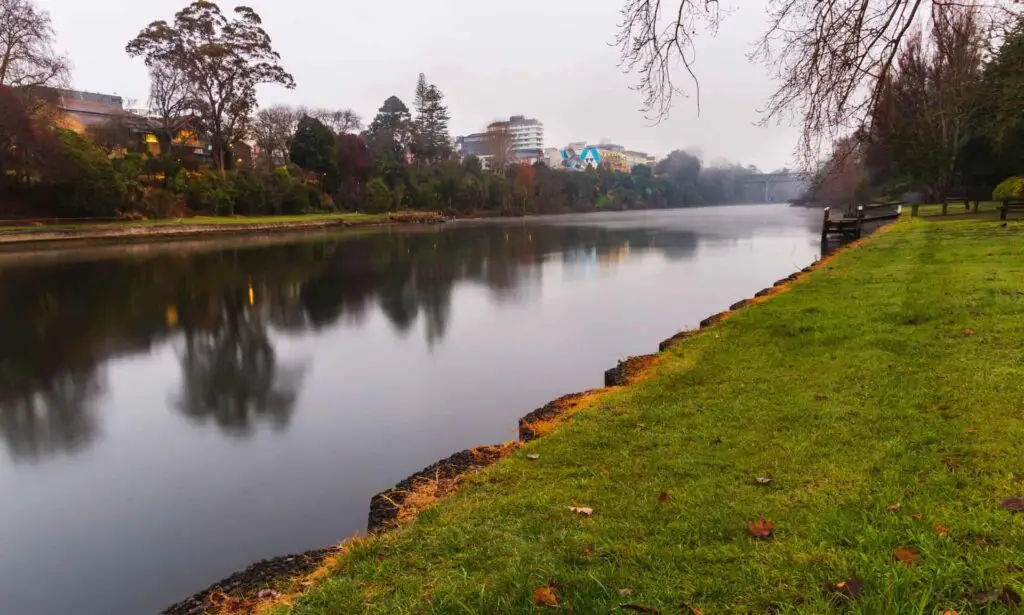
As mentioned, Hamilton is slightly inland, which affects its weather. It also protects the city, and Hamilton isn’t as exposed to extreme weather events as New Zealand’s coastal cities. And although NZ is known as the shaky isles (yes, earthquakes are a fact of life here), they’re less likely in Hamilton, as Waikato’s three major fault lines actually bypass the city.
Pro: Made of Hamilton East
With that huge student population and wealthy local dairy farmers, it’s a little weird that gentrification hasn’t hit Hamilton too hard—and has arguably been a welcome (limited) development. Check out Made of Hamilton East, a local covered market with an emphasis on local foods and products, delivering premium artisanal products without a pretentious attitude.
Con: Commercial crime
Auckland has the highest crime rate in the country, but the Waikato region is a disappointing second in many categories, most notably commercial crime. This covers theft and vandalism committed against businesses. Sadly, break-ins are a common problem for Hamilton businesses. 37% of such insurance claims are made in Auckland, with 18% coming from the Waikato region.
Con: Potential difficulties finding a job
Yes, there’s a booming dairy industry, but if you don’t have any interest in farming, or the associated businesses (like slaughtering beef cattle), are there many job opportunities? There are opportunities in academia, due to the multiple tertiary institutions in the area—including teaching and administrative roles. Waikato has an unemployment rate of 3.6% (for men) and 4.9% (for women), which is fairly high.
Con: Dampness
Housing stock all across New Zealand is in need of some major upgrades, and this can feel really obvious in Hamilton. Although the nearby bogs were drained many decades ago, the dampness has remained. Anyone buying a house must have a thorough inspection performed to make sure that mould isn’t a problem.
Con: The fog
This dampness makes things unpleasant in other ways. Hamilton is notoriously foggy, and at some times of the year the fog can linger until late morning, before returning in the mid afternoon. There’s not much point in having a great view of the Waikato countryside if you can’t see it.
Con: A greater wealth divide
Another thing that seems to be more pronounced in Hamilton is the wealth divide. Anecdotal evidence suggests that the city has a higher number of homeless people than its size would suggest.
Con: STD capital of the country?
This is one thing that has been debunked, but Hamilton still has a reputation as being New Zealand’s STD capital. Perhaps it’s all the university students? The numbers don’t add up (and Auckland is in fact NZ’s STD capital), but the title sticks and Hamilton’s reputation doesn’t deserve the negative association.
Con: A bit boring?
It’s a running joke that Hamilton is the most boring city in New Zealand. It’s sometimes even called Hicksville Hamilton. Things reached fever pitch in 2005 when South African journalists made a point of saying how their national squad really hated spending time in Hamilton when they toured NZ—because there’s nothing to do. Hamilton isn’t the most fast-paced place on the planet, but is it boring? This is a matter of perspective.
Con: Intense real estate competition
Hamilton can’t be that boring if so many people are moving there, and many of these people are Aucklanders seeking a more relaxed pace of life. Sadly, this increases the competition for real estate, which is already a national obsession. Expect finding your Hamilton dream home to take some time.
Con: Tends to be a bit conservative
Hamiltonians, for the most part, are friendly folk. There is an overall sense of political and social conservatism in the city, which is thought to be due to the influence of the farming industry and its rural outlook. This isn’t to suggest that Hamilton is unwelcoming, but its conservative nature has been written about.
Con: Shockingly high council rates
Hamilton is cheaper than Auckland in important ways but is more expensive in ways that are still very relevant. Council rates in Hamilton (a tax based on the value of a property, used to cover local services like rubbish collection) were raised by a staggering 25.5% in 2023.

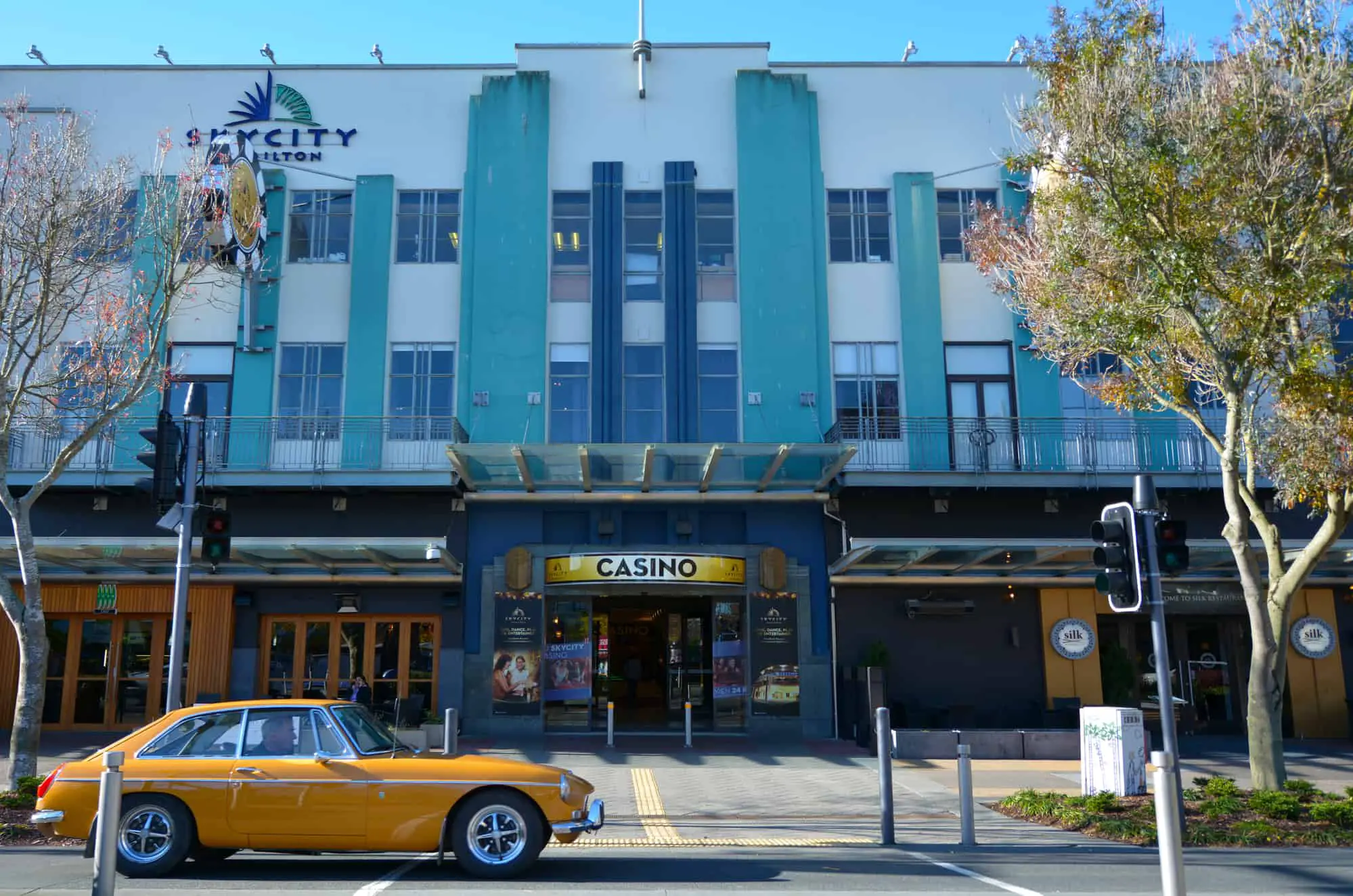
![The Most Beautiful Places To Live in New Zealand [2024]](https://simplenewzealand.com/wp-content/uploads/2023/04/Depositphotos_64449161_L-1-768x360.jpg)
![New Zealand vs Singapore: Best For Living And Immigration [2024]](https://simplenewzealand.com/wp-content/uploads/2023/02/IMG_1983-768x576.jpg)
![New Zealand vs UK: Which Country Is Better For Living? [2024]](https://simplenewzealand.com/wp-content/uploads/2023/01/andreas-sjovall-ZZUPu8ARD8U-unsplash-768x432.jpg)
